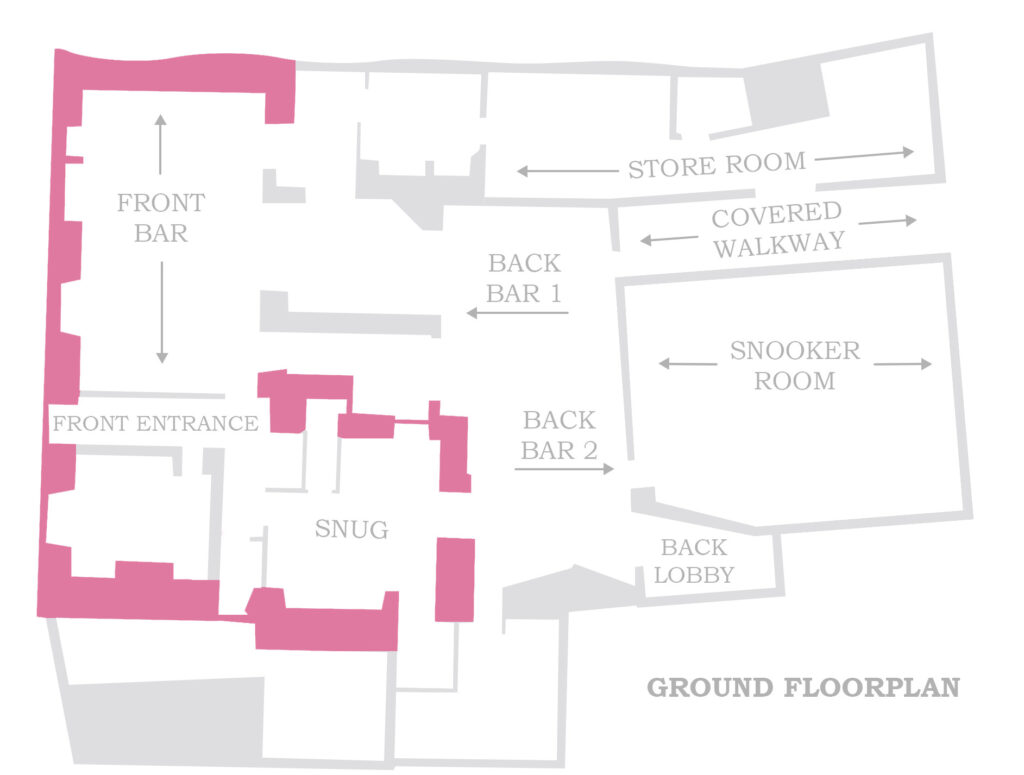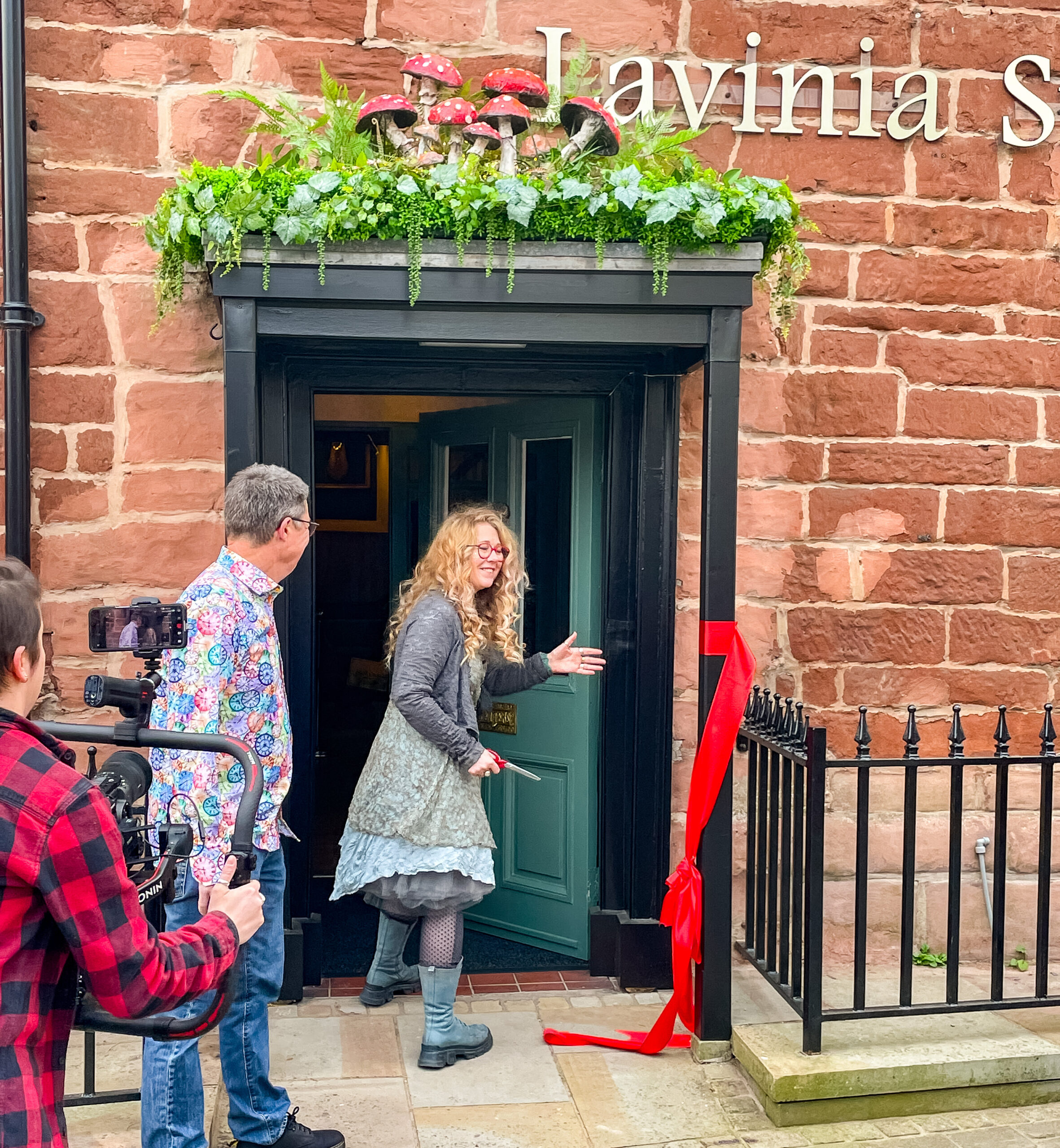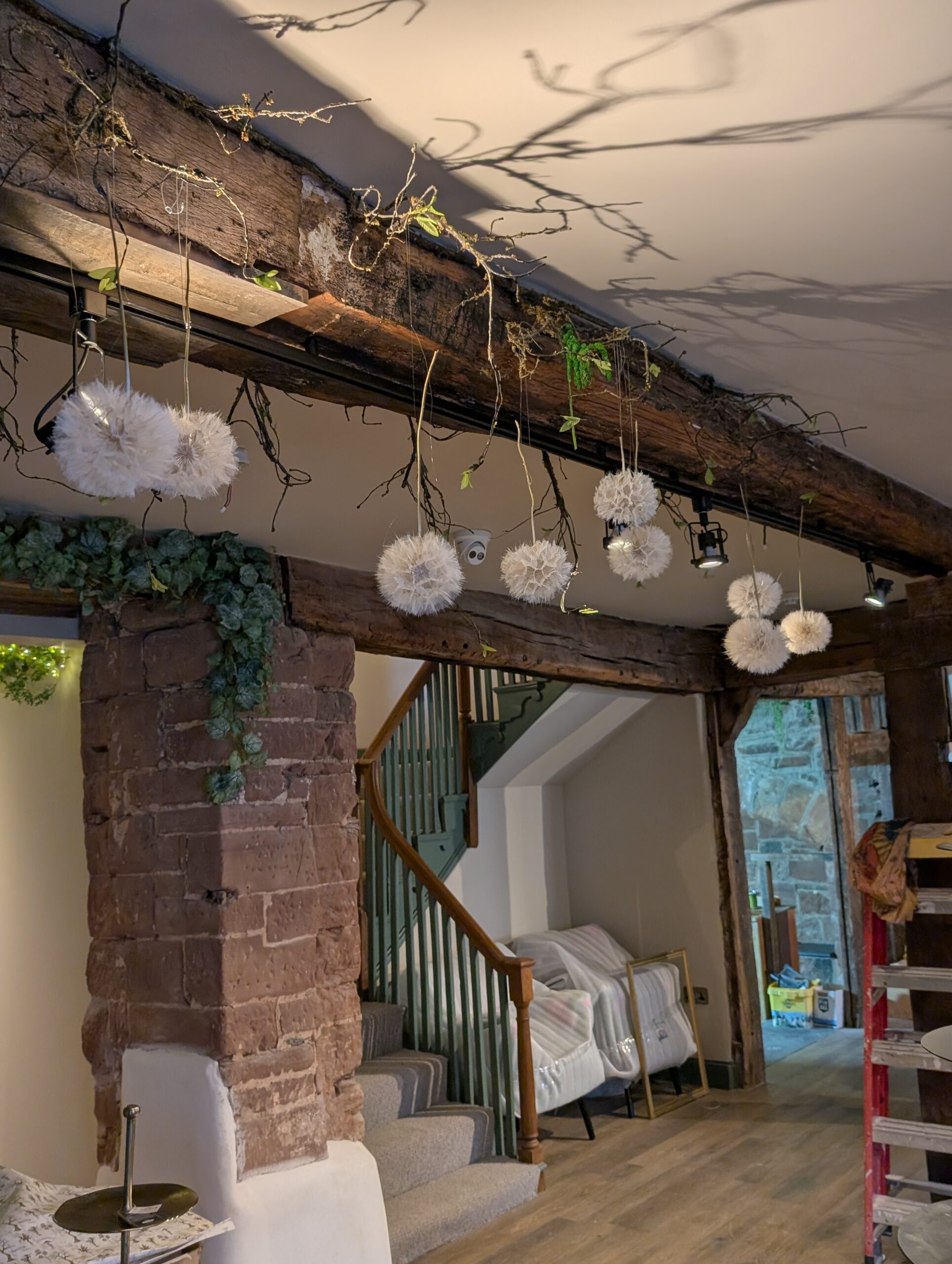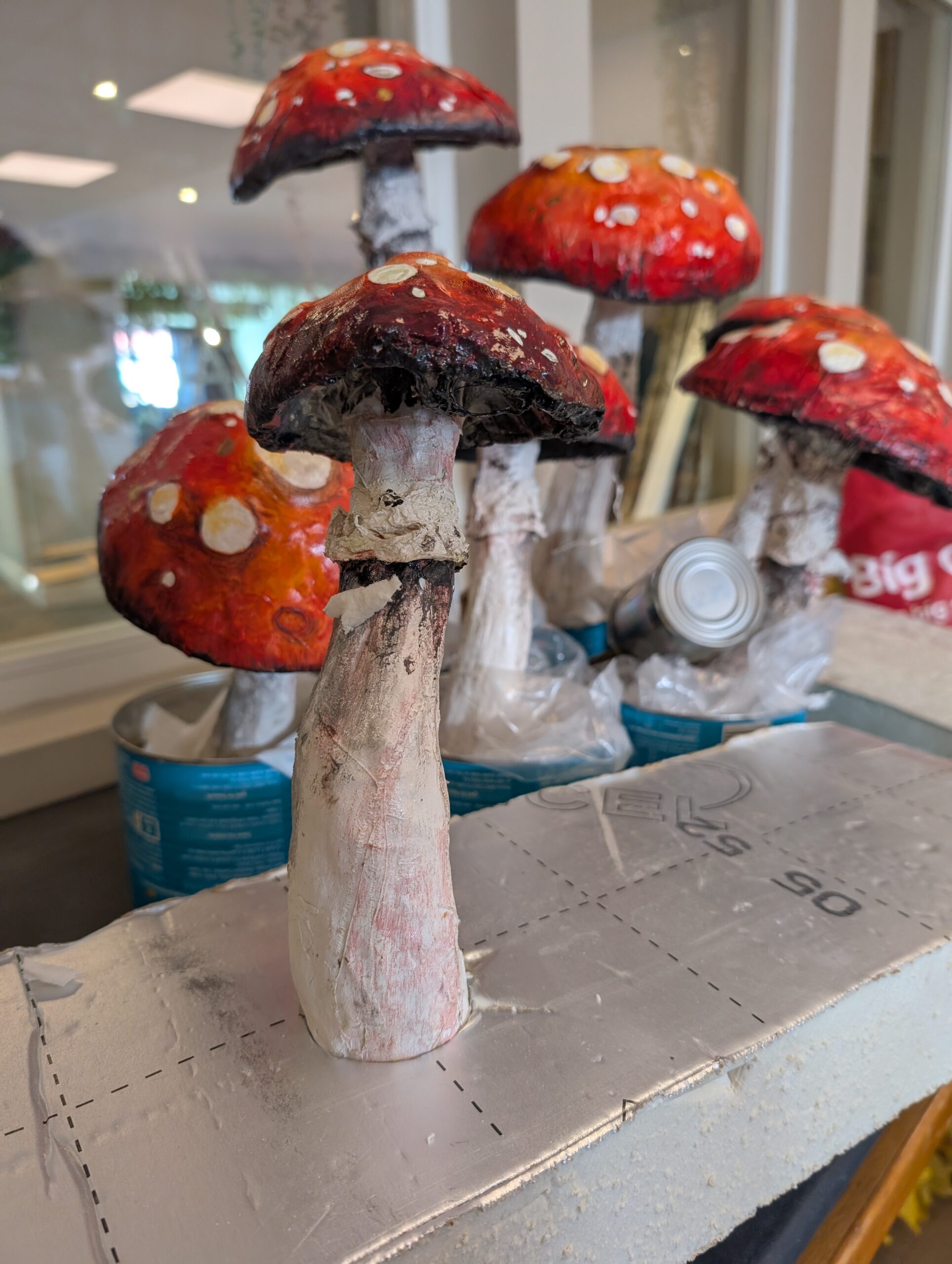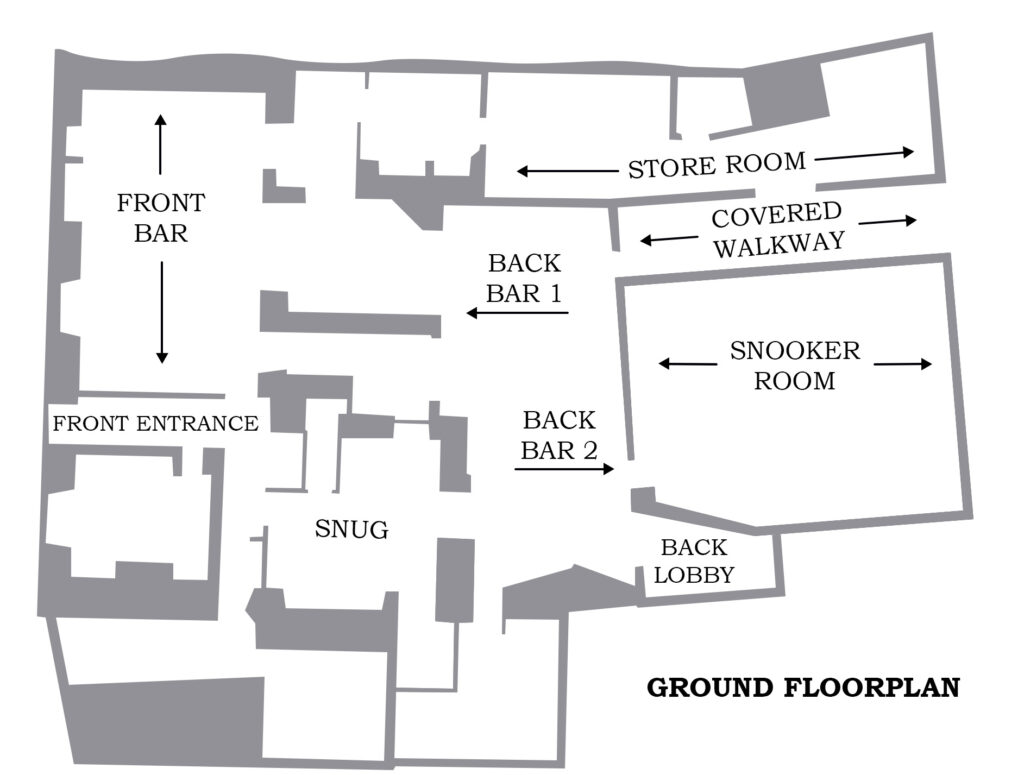
Another fabulous question!
There has always been something about the floorplan of the property that confuddled me. Obviously the modern floorplan was not the floorplan of the original 1608 property. The red stone of the castle was the original building with later additions in either red brick or breeze block. With all the paint and plaster it was difficult to see where the old property stopped and any new ones began.
There were whispers of the property having an alleyway and strange windows on the inside walls of the Snug and on the stairs. Add to that my determination that the front entrance (street) didn’t feel like the original front of the building. This, I hasten to add had no evidence, just a gut feeling.
We could discount the snooker room, back lobby, back bar and the toilet area by the snug from being part of the original property.
Then a series of magical events started that would lead us to a greater understanding of Plas Coch.
It started with a conversation that went along the lines of :
What’s that?
I don’t know – I think it’s a shelf.
Well… that can come off.
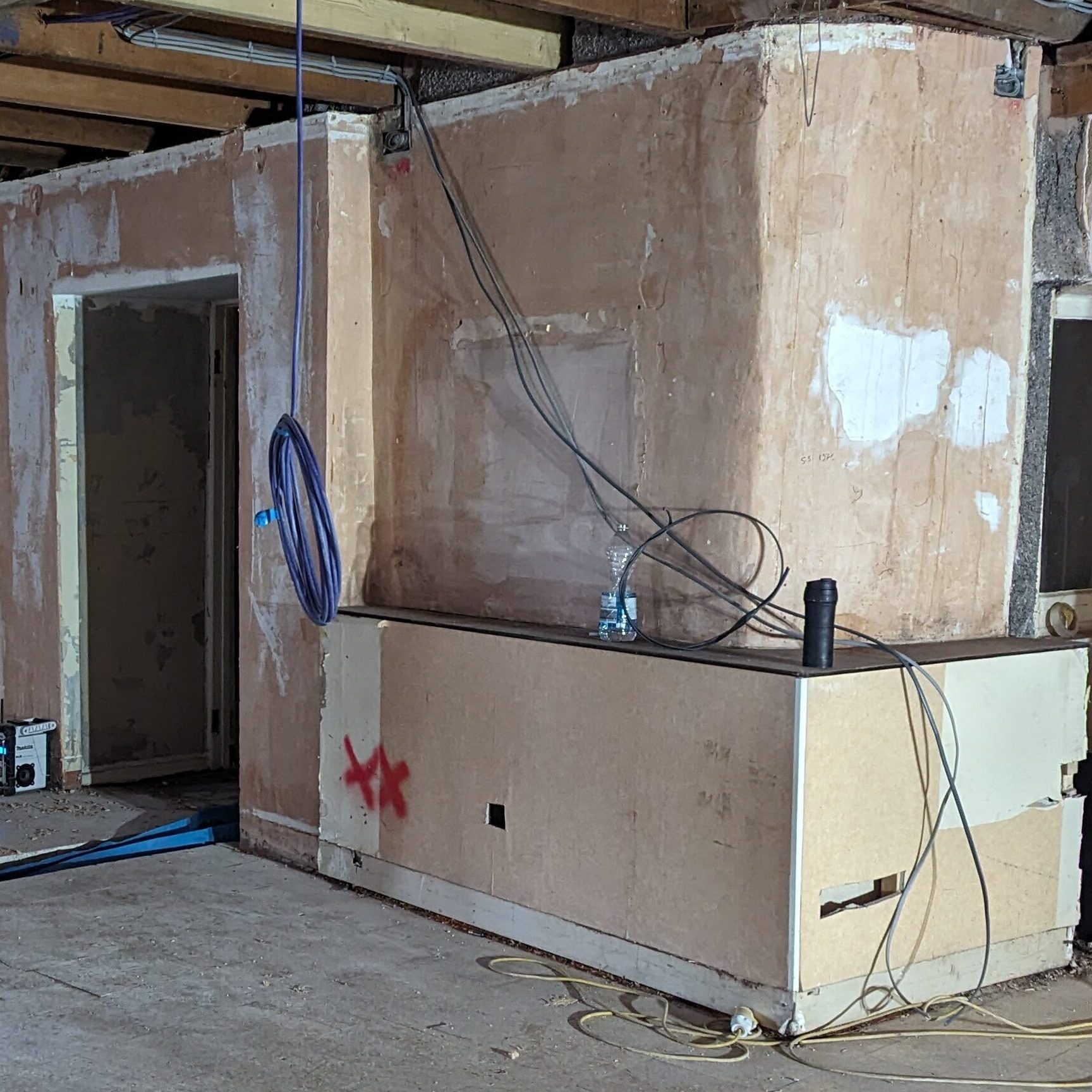
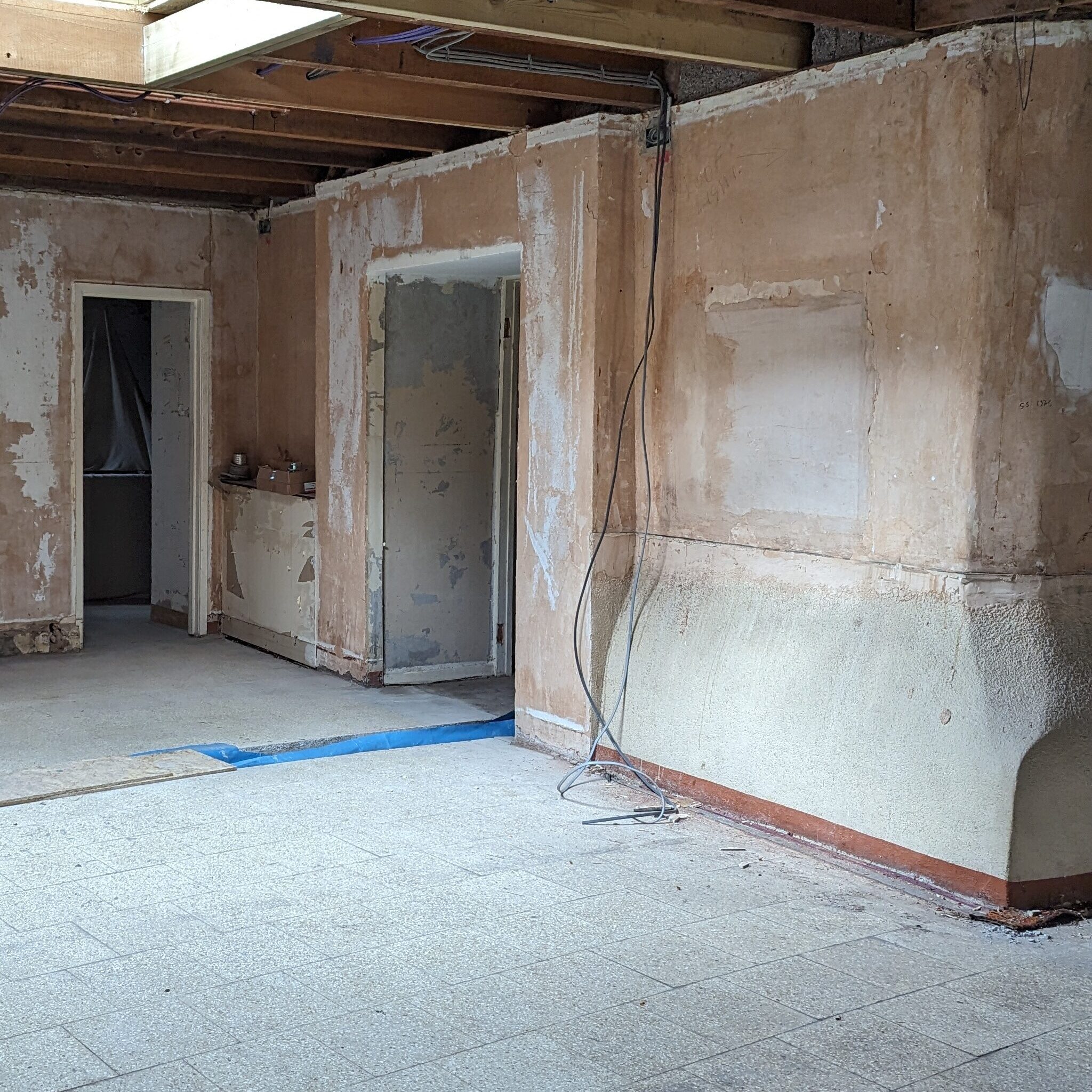
So it was that the shelf in the picture above was removed and it revealed a rather shapely wall.
I asked Mick, the Renovation Team Leader, why this wall looked so odd. He explained that he had seen footings like these before in older properties that were built on wet ground.
This would tie in with what we know of the area. Well Street historically is referred to as being either in the Parish of Llanrhydd or in the Tal y sarn part of Ruthin. In my conversations with Gareth Evans, the historian, he had explained that this meant “alongside the embankment”. This embankment was built to help alleviate flooding.
These shapely footings put this as the original outside wall for this part of the house. This brings the original floorplan of the building to the right hand wall of the Snug with doorway. The area below is now the area that we believe to be the original outside wall. The investigation continues!
